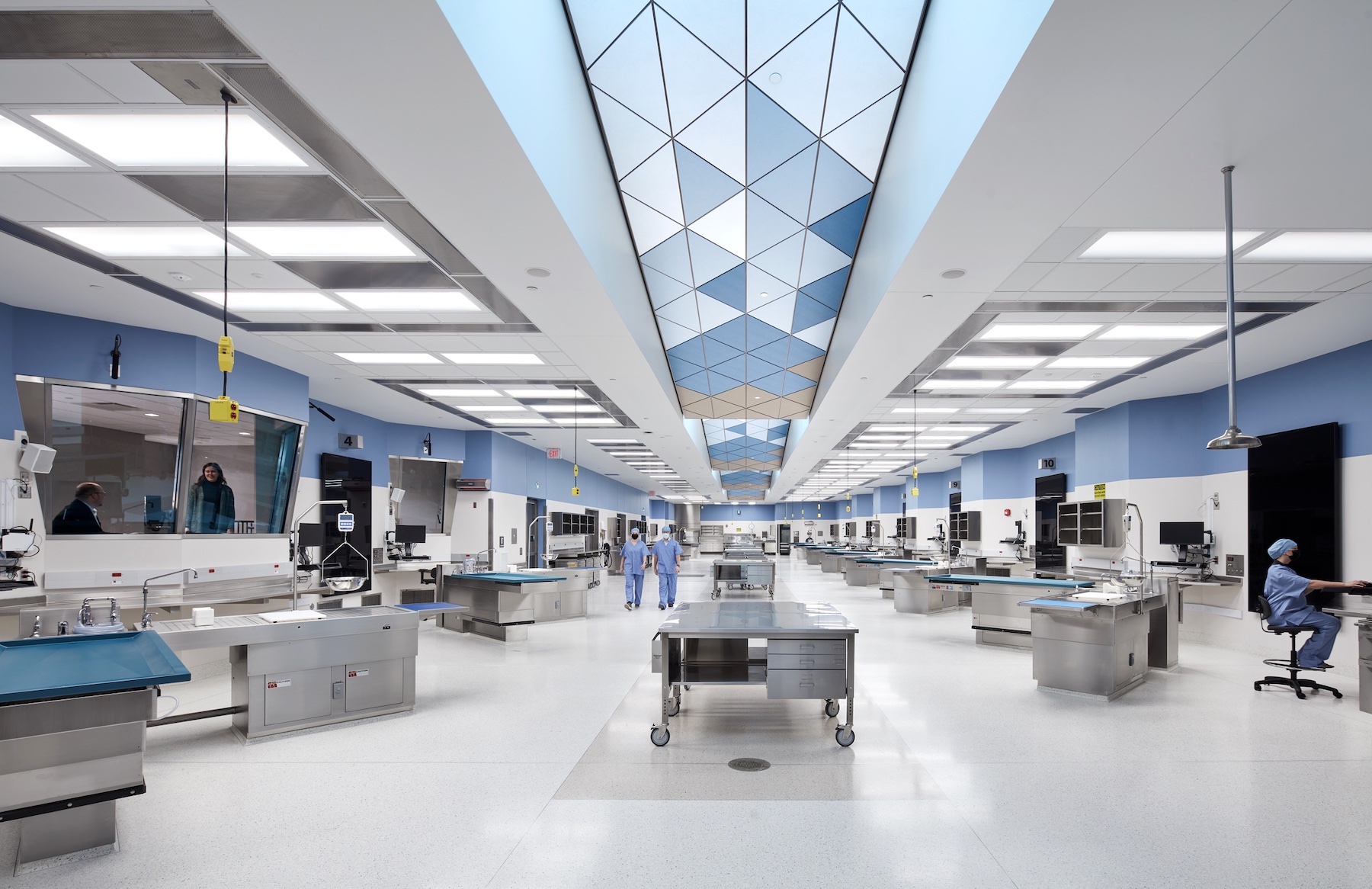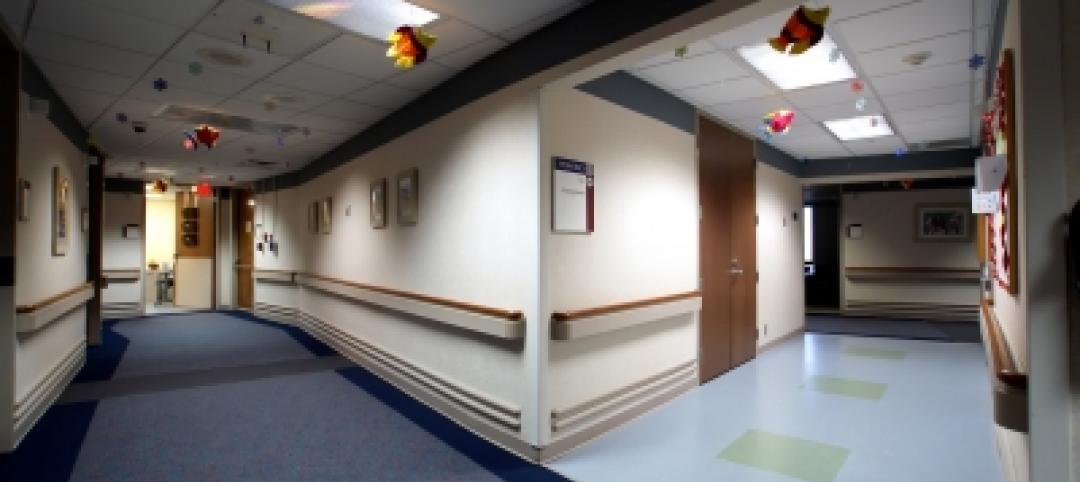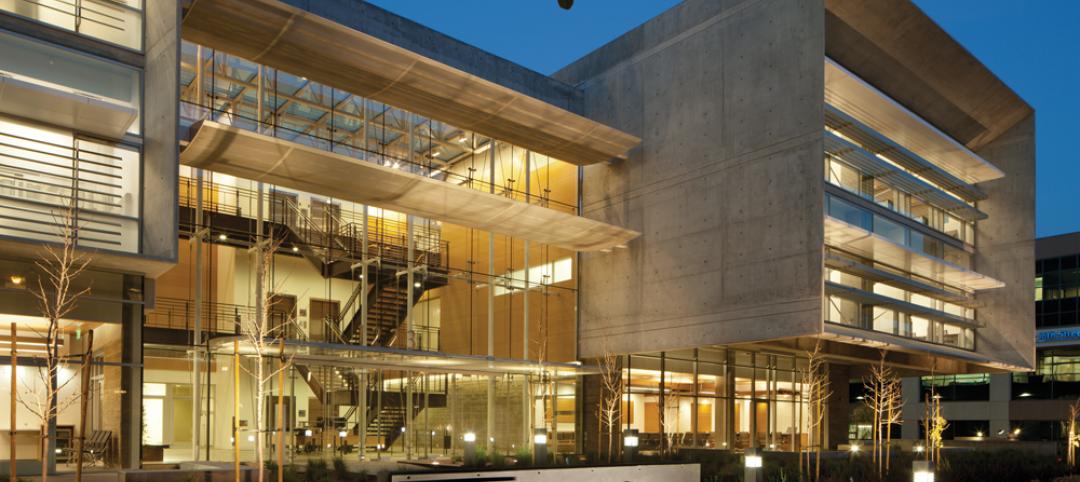Last November, a team led by LEO A DALY completed a new medical examiner office building for Hennepin County in Minnesota that has been recognized as a one-of-its-kind facility in the U.S. The $53 million, 64,000-sf building, located in Minnetonka, Minn., is serving as both a regional center of excellence and a nationwide destination for professional education. It replaces an office that, in 2021, investigated a record 10,000 deaths, according to the Minneapolis Star Tribune.
Dr. Andrew Baker, the county’s chief medical examiner, and his staff reportedly visited nearly a dozen medical examiner offices around the country in search of best practices. They found only three construction firms in the country that specialize in medical examiner offices and crime labs, according to the Star Tribune. (Iowa-based Knutson Construction was the general contractor on this project.)
Indeed, this was the first medical examiner’s facility that LEO A DALY had worked on. The services provided by the firm were architecture, interior design, structural, mechanical, electrical, and fire protection engineering. The project’s lab consultant was MWL Architects. Egan Mechanical was the mechanical subcontractor, and Parsons the electrical sub.
The new facility is set up for greater efficiency and ergonomics. For example, previously bodies that entered the morgue had to be transferred from a gurney to a table by staff, thus creating an injury risk. The patented tables in the new facility can be moved up or down to accommodate the staff’s height, strength, and dexterity. In addition, the new office has its own CT scanner, which allows for greater precision when presenting evidence for trials, and for reducing autopsy times.
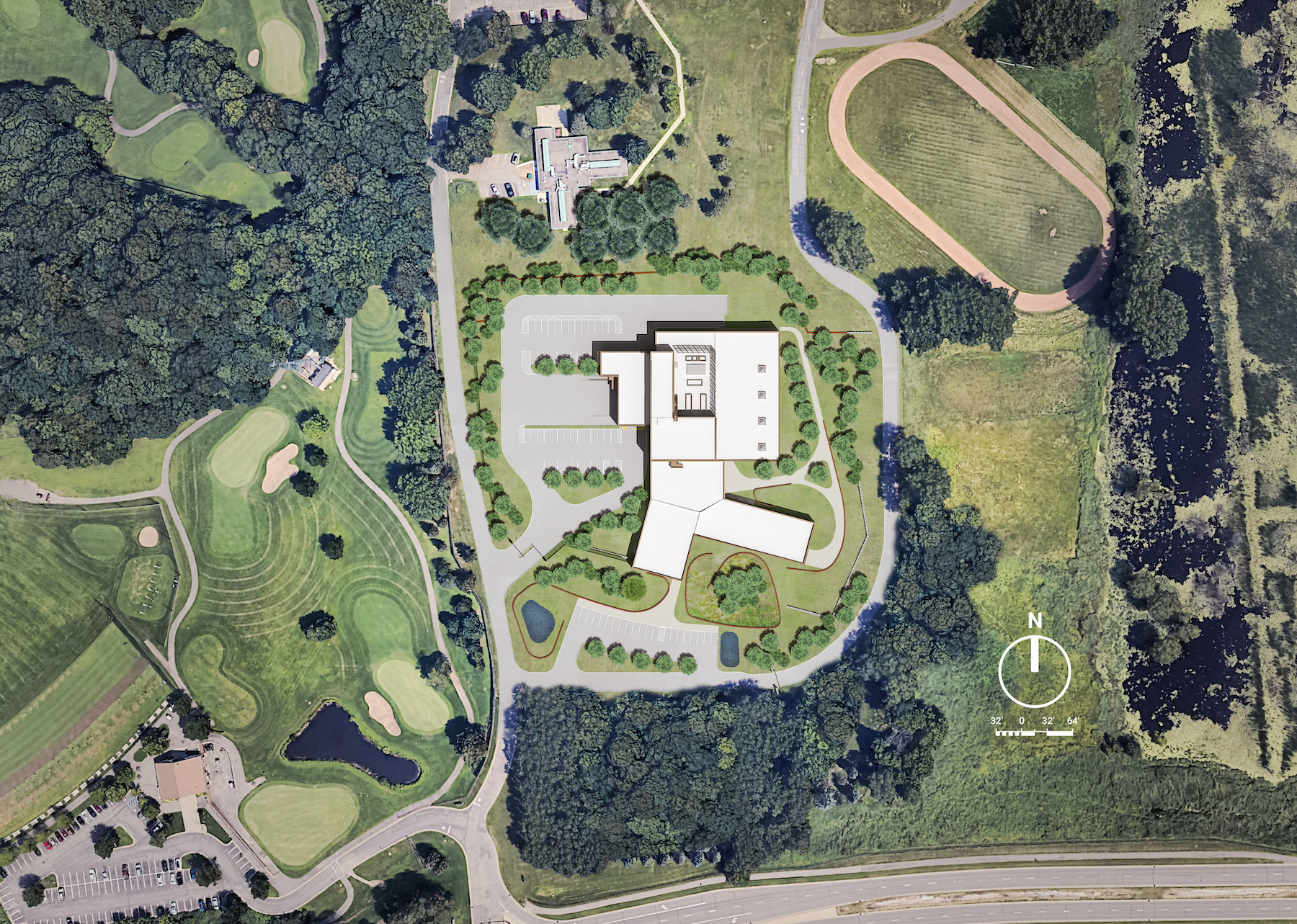
Function and form
The new office “advances design for integration, well-being, and discovery,” states LEO A DALY. Its northern wing houses laboratory functions, including 12 autopsy stations, storage coolers, and freezers for more than 130 decedents, specialized examination and analysis areas, tissue recovery, investigations, and spaces for advanced observation and training. Finishes were selected for durability and ease of sanitation. Strict security and safety measures are balanced with studious attention to staff health and well-being.
The southern wing houses office space, training rooms, consultation spaces, and shared lounges. A unifying hub provides a place for relaxation, connection, and access to the exterior space. The facility is nestled into a woodland and provides opportunities to connect with nature and enjoy respite from this stressful work.
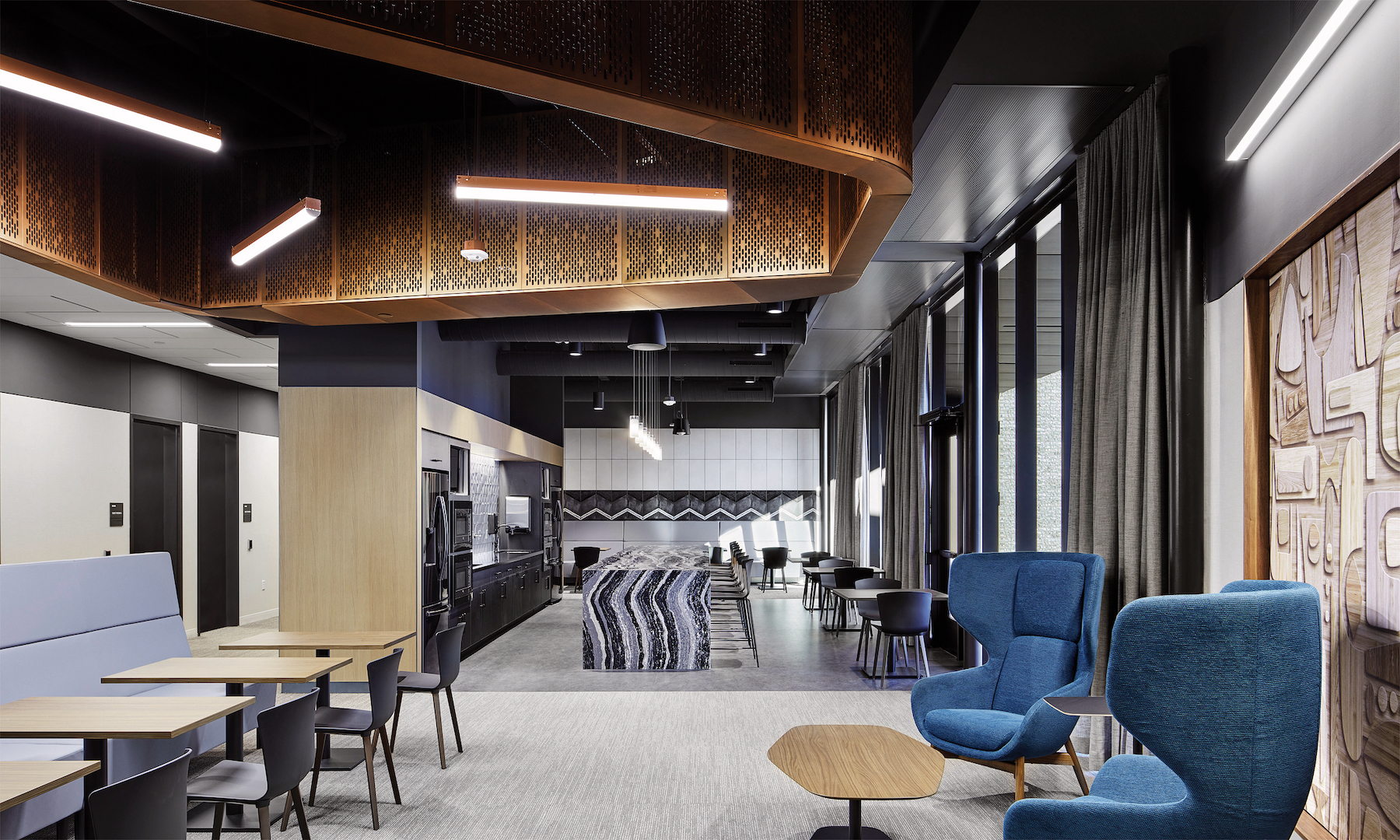
Well-being and mental health
Trauma-informed care provided the nexus of a design for a workplace focused on supporting the mental, emotional, and social health of the staff and doctors.
The building’s placement on the site captures views from staff offices, training and break areas into natural forests, prairies, and wetland areas. Daylight streams into the interior through large sidelights in the office wing. Skylights in the laboratory wing scatter diffuse, refracted light throughout the autopsy area. Angled skylights provide natural light to improve color clarity, aid diagnosis, and prevent visual fatigue. Overhead and task lighting are each manually adjustable and automated for energy efficiency.
Upon exiting the lab, examiners and staff have immediate access to the exterior thanks to the office wing’s branched form. Choice—a central element of trauma-informed design—is offered between spaces for social interaction and quiet, personal reflection. Natural materials and lighting strategies were used to reduce stress levels.
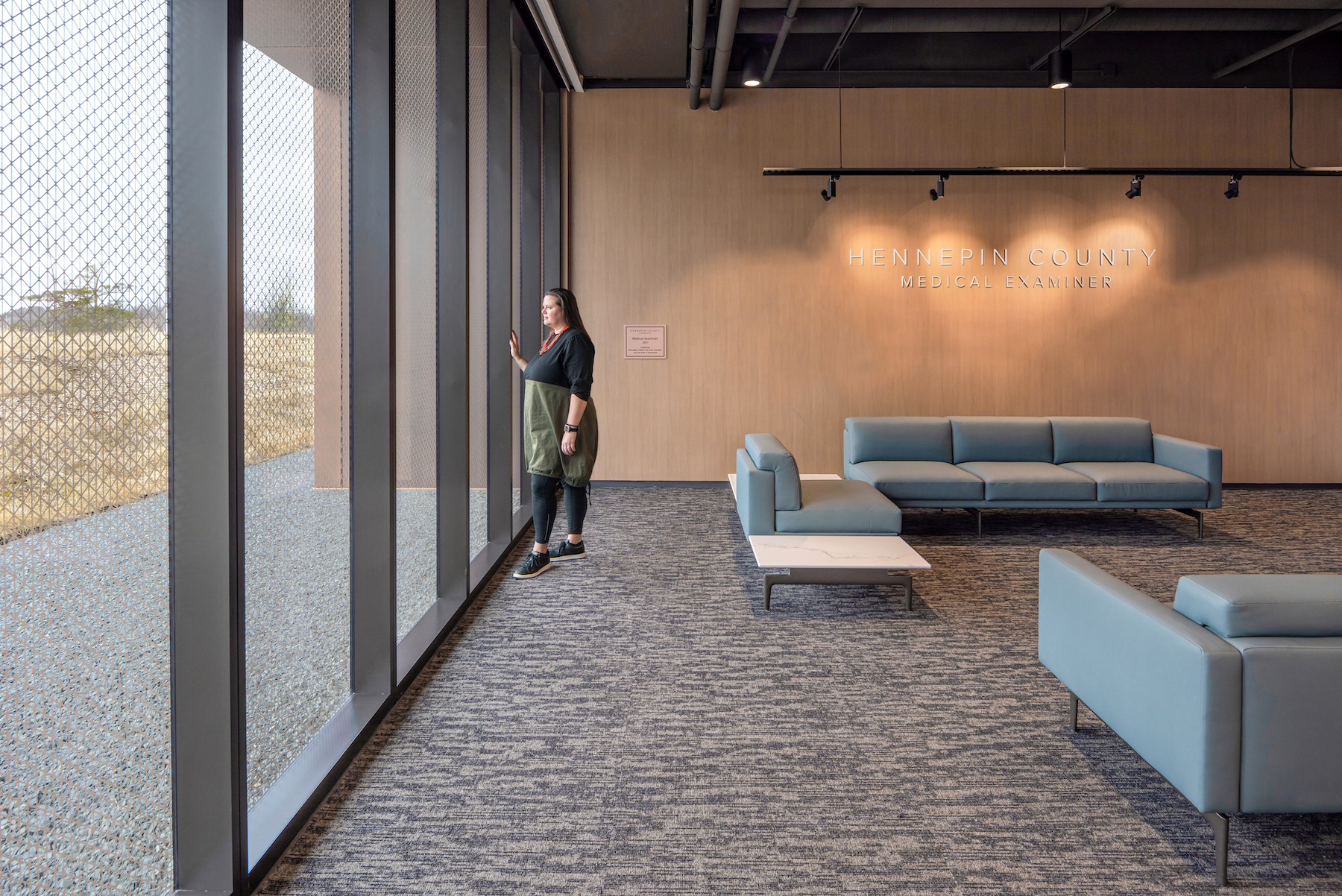
Indoor air quality improved
Hennepin County handled an estimated 1,500 autopsies in 2021.
Autopsies subject doctors and staff to an array of odors and physical strain. The design of the new facility responds with a strategic focus on indoor air quality, ergonomics, and injury prevention.
Computational Fluid Dynamics (CFD) modeling was used to create a breathing zone for doctors and staff that is continuously refreshed with clean air. Each autopsy station is zoned separately and includes personal controls over airflow volumes. Outside air is carefully directed downward and toward low sidewall exhaust grilles, virtually eliminating contaminated air from the room. To save energy, an override switch can be triggered when the space is unoccupied.
Eliminating air flow between the lab and office areas is achieved through precisely controlled air pressure. Clean rooms are positively pressurized relative to dirty rooms to contain odors, pathogens, and contaminants. The office wing of the building maintains positive pressure from all other sections of the building through a separate mechanical system.
Design for discovery
The new Medical Examiner office has achieved National Association of Medical Examiners accreditation, and has been toured by chief medical examiners from across the country. The building’s educational aspects enable discovery by serving as a feeder for medical examiner recruiting.
Unique training features, such as 180-degree visual table observation viewing platforms and 96-inch vertical monitors, provide in-depth educational opportunities for traveling fellows and doctoral students. According to the client, the facility “not only prepares the workforce of the future, but [also] places our region in a sought-after position for the development and training of a highly skilled scientific workforce, adding value to our economy.”
Related Stories
| Dec 3, 2013
Creating a healthcare capital project plan: The truth behind the numbers
When setting up a capital project plan, it's one thing to have the data, but quite another to have the knowledge of the process.
| Nov 27, 2013
Wonder walls: 13 choices for the building envelope
BD+C editors present a roundup of the latest technologies and applications in exterior wall systems, from a tapered metal wall installation in Oklahoma to a textured precast concrete solution in North Carolina.
| Nov 27, 2013
LEED for Healthcare offers new paths to green
LEED for Healthcare debuted in spring 2011, and certifications are now beginning to roll in. They include the new Puyallup (Wash.) Medical Center and the W.H. and Elaine McCarty South Tower at Dell Children’s Medical Center of Central Texas in Austin.
| Nov 26, 2013
Construction costs rise for 22nd straight month in November
Construction costs in North America rose for the 22nd consecutive month in November as labor costs continued to increase, amid growing industry concern over the tight availability of skilled workers.
| Nov 25, 2013
Building Teams need to help owners avoid 'operational stray'
"Operational stray" occurs when a building’s MEP systems don’t work the way they should. Even the most well-designed and constructed building can stray from perfection—and that can cost the owner a ton in unnecessary utility costs. But help is on the way.
| Nov 19, 2013
Top 10 green building products for 2014
Assa Abloy's power-over-ethernet access-control locks and Schüco's retrofit façade system are among the products to make BuildingGreen Inc.'s annual Top-10 Green Building Products list.
| Nov 13, 2013
Installed capacity of geothermal heat pumps to grow by 150% by 2020, says study
The worldwide installed capacity of GHP systems will reach 127.4 gigawatts-thermal over the next seven years, growth of nearly 150%, according to a recent report from Navigant Research.
| Nov 8, 2013
S+T buildings embrace 'no excuses' approach to green labs
Some science-design experts once believed high levels of sustainability would be possible only for low-intensity labs in temperate zones. But recent projects prove otherwise.
| Oct 30, 2013
11 hot BIM/VDC topics for 2013
If you like to geek out on building information modeling and virtual design and construction, you should enjoy this overview of the top BIM/VDC topics.
| Oct 28, 2013
Urban growth doesn’t have to destroy nature—it can work with it
Our collective desire to live in cities has never been stronger. According to the World Health Organization, 60% of the world’s population will live in a city by 2030. As urban populations swell, what people demand from their cities is evolving.


